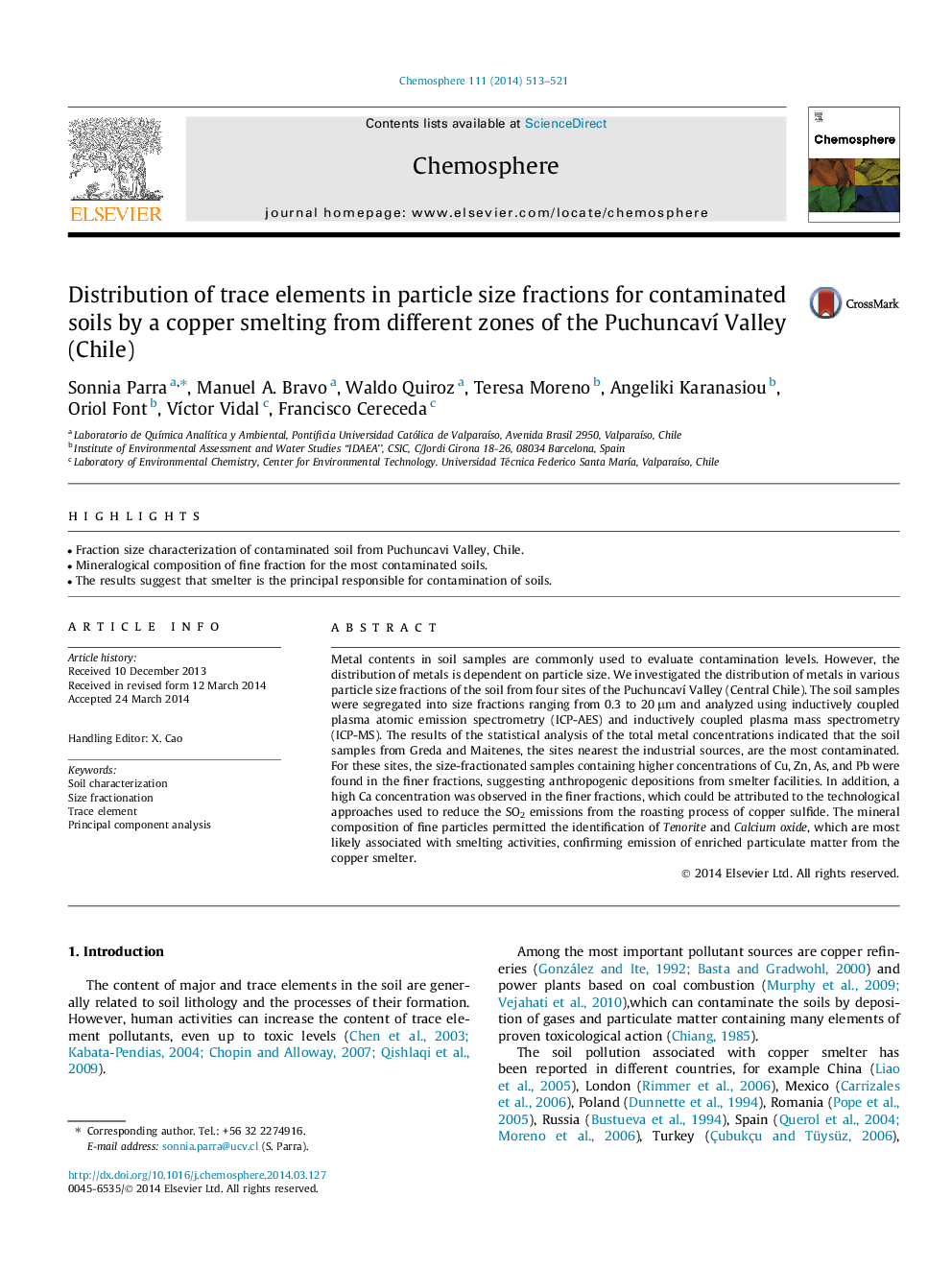| Article ID | Journal | Published Year | Pages | File Type |
|---|---|---|---|---|
| 6308721 | Chemosphere | 2014 | 9 Pages |
Abstract
Metal contents in soil samples are commonly used to evaluate contamination levels. However, the distribution of metals is dependent on particle size. We investigated the distribution of metals in various particle size fractions of the soil from four sites of the Puchuncavà Valley (Central Chile). The soil samples were segregated into size fractions ranging from 0.3 to 20 μm and analyzed using inductively coupled plasma atomic emission spectrometry (ICP-AES) and inductively coupled plasma mass spectrometry (ICP-MS). The results of the statistical analysis of the total metal concentrations indicated that the soil samples from Greda and Maitenes, the sites nearest the industrial sources, are the most contaminated. For these sites, the size-fractionated samples containing higher concentrations of Cu, Zn, As, and Pb were found in the finer fractions, suggesting anthropogenic depositions from smelter facilities. In addition, a high Ca concentration was observed in the finer fractions, which could be attributed to the technological approaches used to reduce the SO2 emissions from the roasting process of copper sulfide. The mineral composition of fine particles permitted the identification of Tenorite and Calcium oxide, which are most likely associated with smelting activities, confirming emission of enriched particulate matter from the copper smelter.
Related Topics
Life Sciences
Environmental Science
Environmental Chemistry
Authors
Sonnia Parra, Manuel A. Bravo, Waldo Quiroz, Teresa Moreno, Angeliki Karanasiou, Oriol Font, VÃctor Vidal, Francisco Cereceda,
